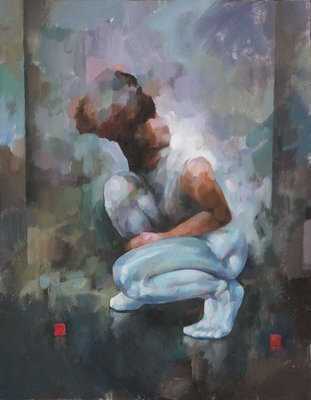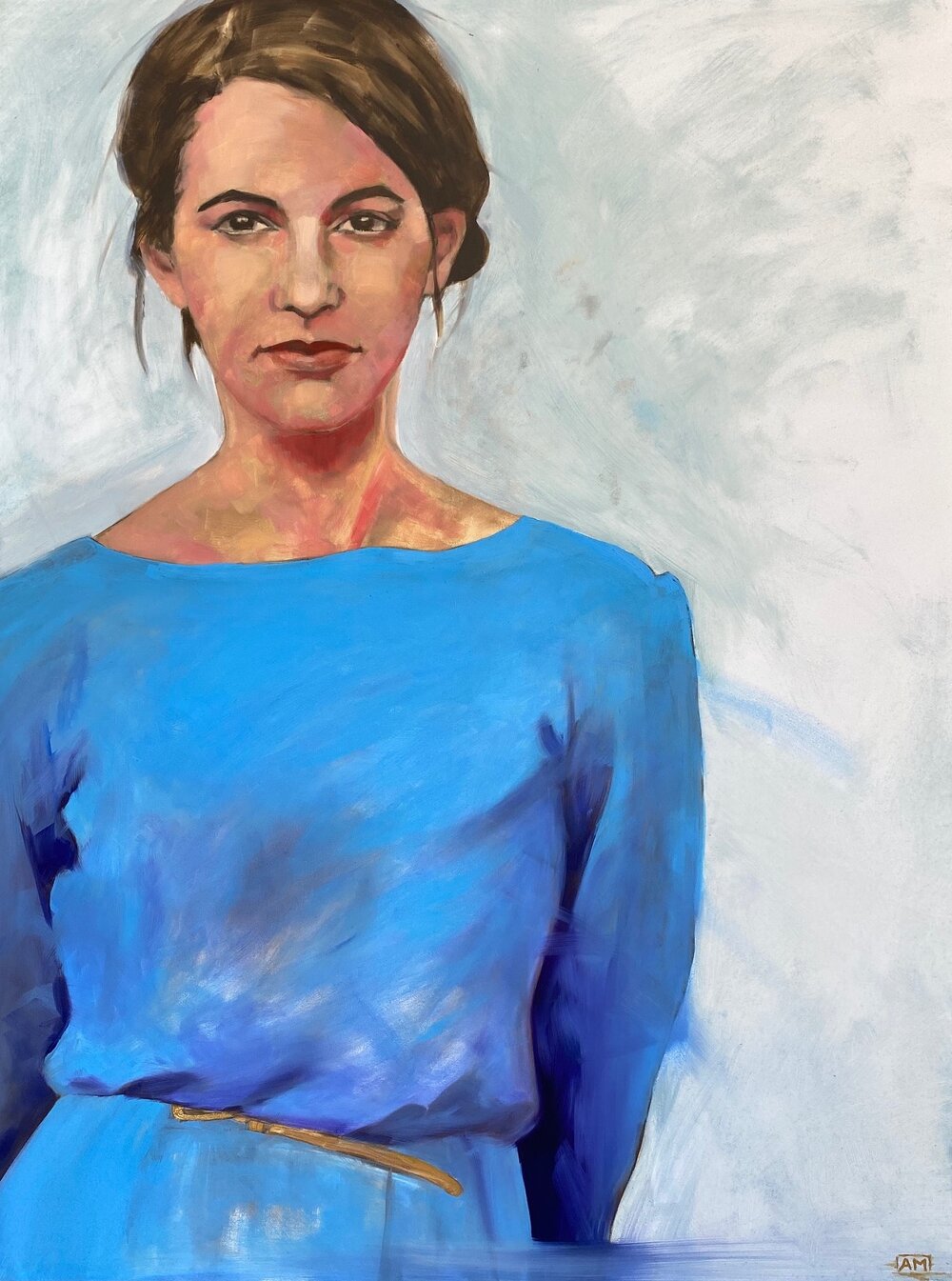Understanding Composition and Color in Figurative Oil Painting
Understanding Composition and Color in Figurative Oil Painting
Blog Article
The Evolution of Figurative Oil Paint: Recognizing Its Historical Significance and Modern Interpretations
The evolution of metaphorical oil paint acts as an engaging lens where to take a look at the interplay in between imaginative expression and historic context. From the precise naturalism of the Renaissance to the emotive power of the Baroque, each era has added layers of significance and technique to this classic medium. Contemporary artists, attracting from this rich heritage, are currently reinterpreting the human figure in manner ins which test conventional narratives. As we discover these improvements, one have to consider exactly how the dialogue in between past and existing informs not only imaginative method but likewise social reflections in a significantly complicated globe.
Origins of Metaphorical Oil Painting
The origins of metaphorical oil painting can be traced back to the very early Renaissance in Europe, particularly in the 15th century. This period marked a significant departure from the level representations and stiff kinds particular of medieval art. Artists began to explore naturalism, emphasizing the human figure and its psychological expression. The growth of oil paint allowed for higher depth of shade and information, enhancing the realism and vibrancy of their job.

In this transformative age, figures were often portrayed within contextually rich environments, showcasing not only their physical features yet likewise their mental states. Pioneers such as Jan van Eyck and Titian utilized the medium's versatility, using layering techniques to accomplish luminance and appearance. This technology facilitated the representation of intricate materials and the nuances of complexion, adding to the development of portraiture and narrative scenes.
Moreover, the Renaissance focus on humanism cultivated a recognition for individuality, which in turn influenced artists to develop more vibrant and relatable numbers - figurative oil painting. As a result, figurative oil paint became an effective vehicle for narration and emotional involvement, preparing for future imaginative motions and styles
Key Historical Activities
Considerable historic movements have actually shaped the advancement of figurative oil painting, each contributing unique ideologies and techniques that increased the medium's possibilities. The Renaissance noted a critical minute, emphasizing realism and the human kind, with musicians like Leonardo da Vinci and Michelangelo pushing the borders of anatomical accuracy and viewpoint. Following this, the Baroque era brought remarkable contrasts of light and darkness, exemplified by Caravaggio, who instilled religious styles with extreme emotionality.
The 19th century presented Romanticism and Realism, where artists such as Delacroix and Courbet tested timeless ideals, concentrating on specific expression and everyday life. The introduction of Impressionism better reinvented the tool by stressing the effects of light and color, causing a separation from traditional representation.
In the early 20th century, motions like Expressionism and Cubism redefined metaphorical painting with abstraction and the exploration of psychological deepness. Each of these activities not just mirrored the societal changes of their times but likewise prepared for modern analyses. The interaction in between these historic activities has actually created a rich tapestry of styles and philosophies, influencing contemporary artists in their quest of catching the human experience on canvas.
Methods and Materials Development

Throughout the Baroque period, strategies such as chiaroscuro and sfumato emerged, boosting the emotional vibration of figurative make-ups. Artists began to trying out glazes and impasto, adjusting texture and brightness. By the 19th century, technologies like the use of pre-mixed paints in tubes reinvented access, allowing artists to paint en plein air and record the short lived effects of light.
The 20th century experienced the intro of synthetic pigments and tools, which increased the combination and modified the consistency of oil paints. The exploration of brand-new application techniques, such as combination knives and brushes of varying rigidity, more diversified imaginative expression. Collectively, these improvements mirror the advancing relationship in between products, techniques, and the artistic vision fundamental in figurative oil paint.

Contemporary Interpretations
Contemporary analyses of metaphorical oil paint mirror a dynamic discussion between practice and development, where artists test developed norms and check out varied styles. This evolution manifests in various methods, as modern artists mix classic techniques with modern concepts, frequently attending to social, political, and individual stories.
Many professionals draw inspiration from historical works, yet they infuse their items with modern perspectives, using you could try this out the human type as a vehicle for discourse on gender, society, and identification. Artists progressively try out abstraction, distortion, and mixed media, which enables for a more comprehensive interpretation of the number and its context.
Additionally, the usage of vivid shade palettes and non-traditional compositions usually offers to disrupt traditional checking out experiences, prompting crucial interaction from audiences. This shift in emphasis extends beyond aesthetics; it shows a growing understanding of the intricacies of human experience in an interconnected globe.
As metaphorical oil paint remains to progress, it continues to be a crucial tool for exploring the nuances of modern life, embodying both a regard for heritage and a dedication to dynamic thought. The outcome is a rich tapestry of expression that reverberates with the complexities of the modern human problem.
Influence on Modern Art
The effect of metaphorical oil paint on contemporary art is extensive, as it has actually consistently influenced a myriad of imaginative activities and practices throughout the 21st and 20th centuries. From Expressionism to Surrealism and past, the exploration of the human figure has actually continued to be a central theme, enabling musicians to communicate complex feelings and narratives. This focus on metaphorical representation has actually caused a re-examination of conventional strategies, leading to innovative methods that blend realism with abstraction.
Moreover, contemporary musicians have actually welcomed metaphorical oil paint as a way to address social and political problems, utilizing the browse around this site medium to challenge understandings of sex, identification, and society. The rebirth of interest in metaphorical work in current years reflects a longing for link in a progressively digital globe, where human experience and feeling are paramount.
In addition, the dialogue in between figurative oil paint and contemporary art is evident in the works of musicians such as Kehinde Wiley and Jenny Saville, who attract on historic recommendations while infusing their items with contemporary importance. my site Eventually, figurative oil paint continues to shape and redefine modern-day artistic expression, emphasizing its long-lasting importance in the art world.
Final Thought
The development of metaphorical oil paint emphasizes its historical value and adaptability across different imaginative motions. From the naturalism of the Renaissance to the stirring expressions of the Baroque and the cutting-edge strategies of modernity, this tool has actually consistently transformed. Contemporary interpretations mirror unconventional make-ups and dynamic colors, fostering vital interaction with social and political styles. Eventually, metaphorical oil painting continues to be an essential medium for checking out the human experience, reverberating greatly in today's electronic landscape.
The advancement of metaphorical oil painting offers as a compelling lens through which to check out the interaction between imaginative expression and historical context.Considerable historic motions have shaped the development of figurative oil painting, each adding unique viewpoints and strategies that broadened the tool's opportunities.As historical motions formed the trajectory of metaphorical oil paint, the strategies and products utilized by musicians have actually also undertaken significant improvements. figurative oil painting.The effect of metaphorical oil paint on modern art is profound, as it has constantly inspired a myriad of imaginative motions and methods throughout the 20th and 21st centuries.The advancement of figurative oil painting highlights its historic significance and adaptability throughout different artistic movements
Report this page